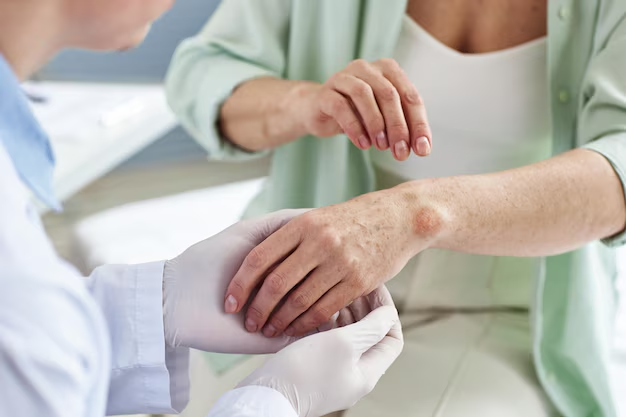Understanding Shingles: How to Recognize and Test for This Viral Infection
If you've ever experienced the tingling, burning sensation of a rash that came out of nowhere, you might have wondered if it's something more than a simple irritation. Shingles, caused by the varicella-zoster virus, can lead to painful, blistering rashes and a host of uncomfortable symptoms. Knowing how to test for shingles can bring clarity and comfort, helping you understand what's going on with your body and what steps to take next.
Unveiling the Mystery of Shingles
Shingles, medically known as herpes zoster, is linked to the same virus responsible for chickenpox. Once you’ve had chickenpox, the virus doesn’t leave your system; instead, it lies dormant in your nerve tissues. For reasons not entirely understood, it can reactivate years later as shingles. The key to dealing with shingles effectively is early detection and understanding the symptoms.
Recognizing the Signs and Symptoms
Before diving into testing, it's crucial to recognize the symptoms that could indicate shingles:
- Pain and Sensitivity: Patients often describe the pain associated with shingles as burning, itching, or stabbing. It usually appears on one side of the body, aligned with nerve paths.
- Rash Development: A red rash typically follows the pain. As it progresses, the rash transforms into fluid-filled blisters, similar to chickenpox.
- Other Symptoms: Fever, headache, chills, and fatigue can accompany the rash and pain. Some might also experience sensitivity to light or an upset stomach.
Understanding these symptoms can prompt timely medical consultation and testing, which is vital in managing shingles.
How to Test for Shingles
Detecting shingles involves a combination of clinical examination and laboratory tests. Below are the primary methods utilized to confirm a shingles diagnosis:
Clinical Evaluation
The most straightforward method begins with a clinical evaluation by a healthcare provider. This involves:
- Medical History Review: A detailed account of your past health, any chickenpox occurrences, and current symptoms can guide the doctor.
- Physical Examination: A visual inspection of the rash can provide significant clues. Shingles have a distinctive appearance that trained professionals can often recognize.
Laboratory Tests
When clinical signs are ambiguous, lab tests can provide a definitive answer.
- Polymerase Chain Reaction (PCR) Test: This test detects the DNA of the varicella-zoster virus from a swab of the rash's blister fluid. PCR is highly accurate and can distinguish shingles from other skin conditions.
- Direct Fluorescent Antibody (DFA) Test: This helps to identify and differentiate between herpes simplex viruses and varicella-zoster virus, although it's less commonly used than PCR.
- Blood Tests: Although less definitive, blood tests can detect antibodies to the varicella-zoster virus. While helpful, they can't distinguish between a recent or past infection.
When to Seek Testing
It's essential to consult a healthcare provider if:
- You experience pain or a rash on one side of the body
- The rash is near sensitive areas such as the eyes
- You have a weakened immune system
- Your symptoms are severe or worsening
Exploring Related Concerns
Testing for shingles might be the initial step, but understanding the broader context of this infection can enhance your grasp on how to manage it.
Shingles Risk Factors
Multiple factors can increase the likelihood of developing shingles:
- Age: Individuals over 50 have a higher chance of experiencing shingles.
- Compromised Immune System: Conditions like HIV, cancer, or even stress can weaken your immune system and trigger shingles.
- Previous Chickenpox Infection: If you've had chickenpox, the dormant virus can reactivate as shingles.
Potential Complications
If not managed promptly, shingles can lead to complications:
- Postherpetic Neuralgia (PHN): Prolonged pain in affected nerve areas after the rash heals is a common complication.
- Vision Loss: Shingles near eyes can induce infections leading to vision problems.
- Neurological Issues: Rare cases involve inflammation of the brain, motor problems, or facial paralysis.
The Importance of Vaccination
Vaccination stands as a powerful measure against shingles.
- Shingrix Vaccine: Approved for those over 50 and immunocompromised adults, Shingrix is more than 90% effective.
- Vaccine Timing: It's important to speak to a healthcare provider about the timing and appropriateness of the vaccine, especially if you've had shingles previously.
Empowering Yourself with Information
Understanding the symptoms, testing procedures, and related information about shingles empowers you to make informed decisions. While shingles can be a distressing experience, prompt testing and intervention can ease symptoms and prevent complications.
Here’s a quick summary to highlight the necessary points:
- 🔍 Recognize early symptoms: Pain, rash, fever, and fatigue.
- 🏥 Seek timely medical evaluation: Clinical examination and lab tests like PCR are key.
- ⏳ Know risk factors: Age, immune compromise, and previous varicella infections.
- 💉 Consider vaccination: Shingrix is a powerful preventive tool.
- ⚠️ Be aware of complications: PHN, vision issues, and neurological risks can arise.
By staying informed and proactive, you can navigate the challenges of shingles confidently and take steps toward better health.
